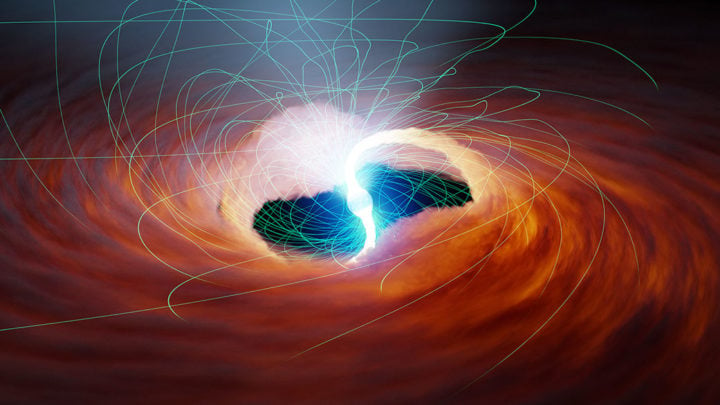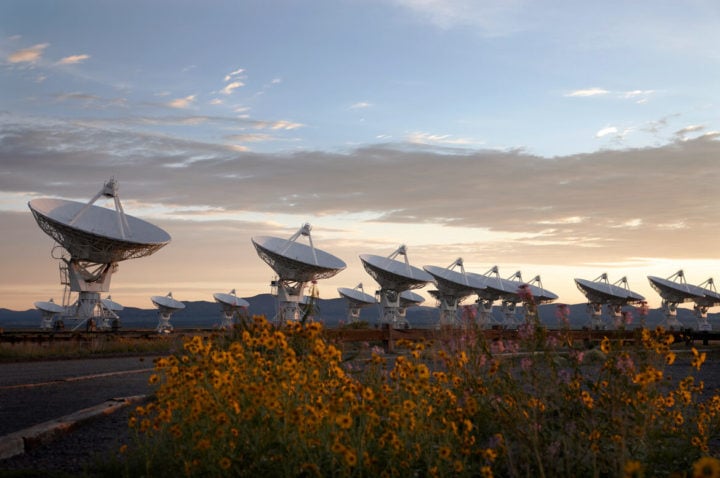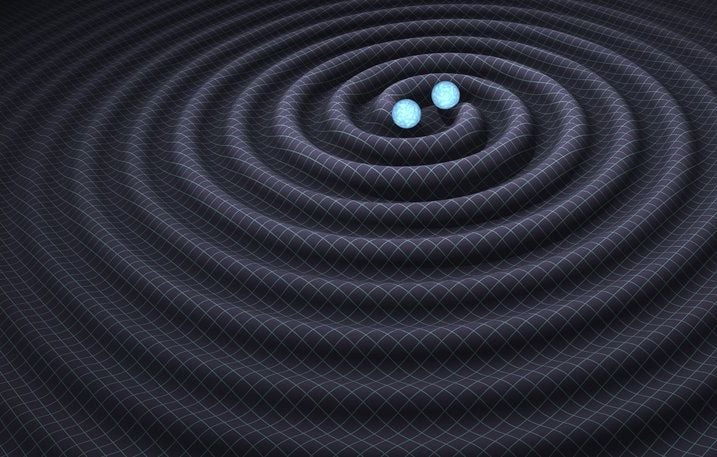The Stanford physicist and astrophysicist Roger Blandford discusses new findings related to gravitational waves observed with the help of spinning, flashing stars – and what it could reveal about how galaxies evolve.

This is what a pulsar could look like – artistic interpretation. Image credit: NASA/JPL-Caltech
Astronomers around the world have spent decades observing dozens of pulsars – the super-dense remains of exploded stars that emit regular pulses of radio waves as they spin at ludicrous speeds, like runaway lighthouses.
Last week, dozens of physicists began promising to reveal findings from these observations that could, in time, change our understanding of the universe.
On the evening of June 28, several research groups announced that they had found evidence of low-frequency gravitational waves: fantastically long ripples in the fabric of spacetime that alter the timing of the pulsars’ flashing signals by minuscule amounts.
With further research, the network of pulsars may act as a galaxy-scale telescope for glimpsing the sources of those waves, potentially providing clues about the evolutions of millions of galaxies across the universe.
“Investigating the origins of these gravitational waves may help us tell the narrative history of how galaxies are born, how they grow, and how they die,” said Stanford’s Roger Blandford, who answered some questions on the significance of the announcement for Stanford News.

Roger Blandford. Image credit: Courtesy Roger Blandford
This announcement is the culmination of many years of collecting data from pulsars across our neighborhood of the Milky Way. What sets these findings apart from those that came before?
A couple of years ago, there was an announcement of a signal of what these astrophysicists were looking for, but they hadn’t confirmed the signature of low-frequency gravitational waves rather than just some general signal out there.
Now, they are starting to see a telltale signature of the gravitational waves themselves. There’s still some doubt – there should be – but it looks like a pretty careful measurement.
Where do astrophysicists think these gravitational waves might have come from?
They’re looking at a background of gravitational radiation from many undifferentiated sources – like looking through a fog, as it were, seeing a sort of diffuse light rather than a single source. However, when their sensitivity improves, they should start to see the nearby, individual sources making up that background fog.
How long it takes to get to that point depends on how the pulsar observation techniques improve and on what sources of gravitational radiation are actually out there. The leading candidate for the source of what they’re detecting now is a population of merging, massive black holes.

The Very Large Array in New Mexico was part of the group of telescopes to use pulsars, an ultra-dense remnant of a massive star’s core following its demise in a supernova explosion, to observe low frequency gravitational waves. Image credit: NRAO/AUI/NSF
What’s significant about investigating the origins of gravitational waves?
It may tell us a lot about the life histories of galaxies. A large part of that is how they merge together.
The basic interpretation is that, long ago, we had smaller galaxies merging together to become bigger galaxies, and the black holes in those galaxies’ centers also merged. But we haven’t had strong evidence that black holes merge, or how, because if you actually look for these paired black holes, they’re rather shy.
So if the idea that these gravitational waves come from merging black holes is borne out by subsequent observations – and it’s certainly on the right track to do that – then we will have one key part of the story of how galaxies merge. This is more like doing paleontology or archaeology more than like doing physics experiments.

Rendered image showing gravitational waves. Image credit: LIGO/Caltech
What do you think is most important for people to understand about the scientific process involved in a discovery of this scale?
It’s a collaboration. You have people who are experts in signal processing, people who are experts in using telescopes, and more.
And it’s an international enterprise: there’s NANOGrav observing pulsars from the U.S., but there are five other teams out there, too. They’re going to combine their signals and try and get a stronger result, and it will get even better in the future because they will observe even more pulsars over longer periods of time.
They all have to compete, cooperate and collaborate. It’s complicated! And it all has to be paid for – the National Science Foundation should be credited for sticking with this research for 15 years. There’s a lot of work that’s gone into this, and I’d be very surprised if there’s any serious flaw in it. We seem to be opening up a new window on the universe.
Source: Stanford University

